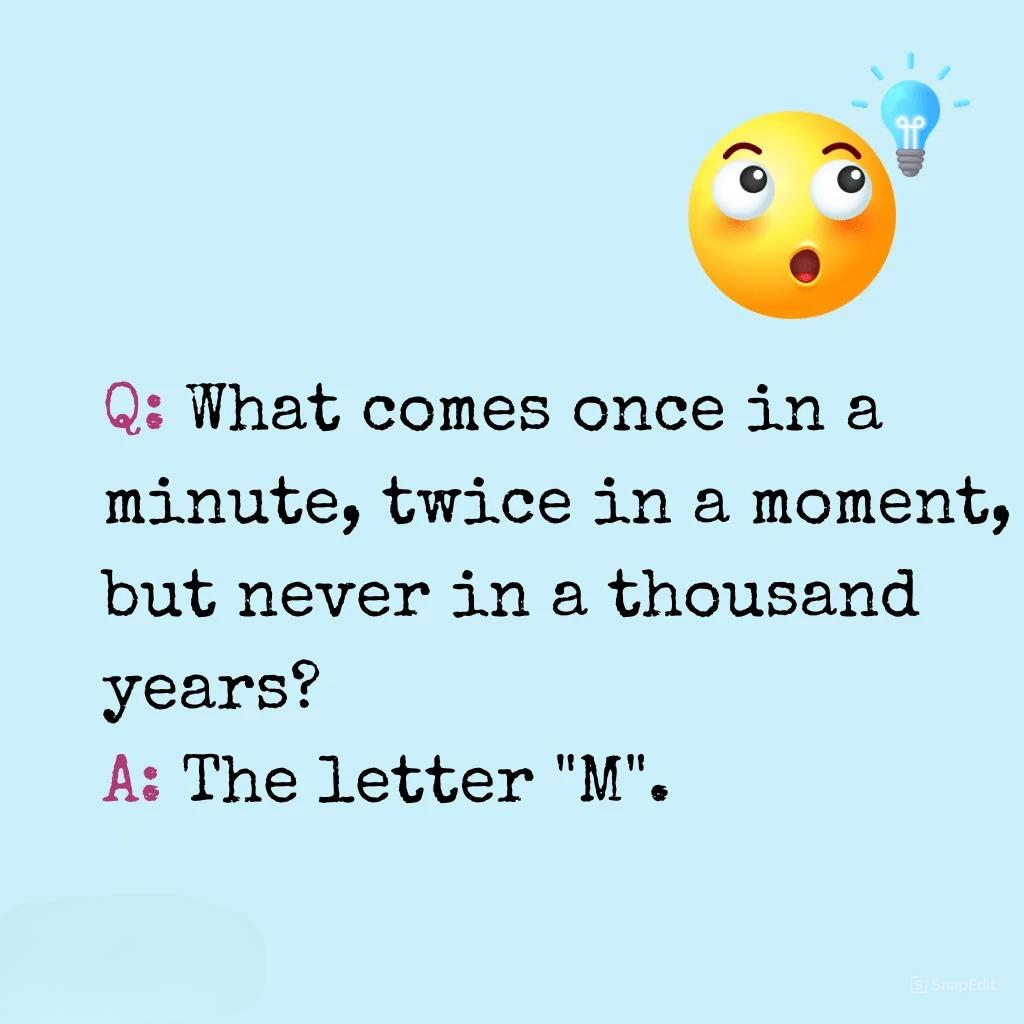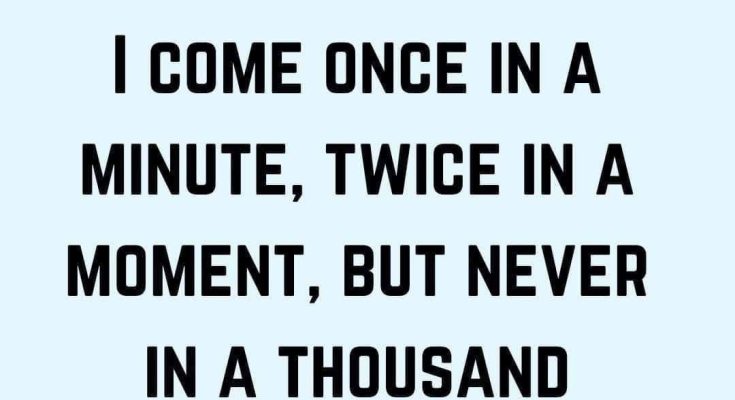
Are you ready for a mental workout? Puzzles are more than just a way to pass the time—they sharpen your logic, stretch your creativity, and reveal how you approach challenges. Today, I have a riddle that’s stumped many, and I’m inviting you to take a crack at it.
Here’s the question:
Take a moment (pun intended!) to think it through. Can you solve it? Before you dive into the comments to check your answer, let’s explore why puzzles like this one can be trickier than they seem.
Why We Get Puzzles Wrong: Common Pitfalls
Puzzles often trip us up because they require us to think differently. Let’s break down some of the most common mistakes people make when solving riddles:
- Overthinking: Sometimes, the simplest answer is the right one. Puzzles are often designed to mislead you into thinking the solution is more complex than it is.
- Missing Key Details: Puzzles rely on small clues. Miss one detail, and you’ll likely head down the wrong path. For example, in this riddle, the key lies in understanding how letters, not time, fit into the phrasing.
- Jumping to Conclusions: It’s easy to assume you know the answer before fully analyzing the question. This leads to rushed, incorrect guesses.
- Literal Interpretation: Many riddles use language playfully. If you interpret the question too literally, you might miss the abstract or creative angle it’s asking you to consider.
In this particular riddle, the challenge lies in recognizing that it’s not asking about time but rather about letters and their occurrence in words. Now that you know the pitfalls, let’s solve it step by step!
Solving the Riddle: Step-by-Step Explanation
The riddle reads: “What comes once in a minute, twice in a moment, but never in a thousand years?” At first glance, it seems like we’re discussing time, but the key lies in the letters of the words themselves. Let’s break it down:
1. “What comes once in a minute”
Focus on the word “minute.”
- Look closely at the letters that make up the word.
- Notice that the letter “M” appears exactly once in the word minute.
So, the first clue points us toward the letter M.
2. “Twice in a moment”
Now, shift your focus to the word “moment.”
- Examine the letters again.
- Here, you’ll see that the letter “M” appears twice in the word moment.
The second clue confirms that the letter M fits this part of the riddle as well.
3. “But never in a thousand years”
Finally, consider the phrase “a thousand years.”
- Scan through the letters of the phrase.
- You’ll find that the letter “M” doesn’t appear at all in the words “a thousand years.”
This final clue completes the puzzle, reinforcing that the answer is the letter M.
The Answer: The Letter “M”
Congratulations if you figured it out! The beauty of this riddle lies in its clever wordplay. It tricks you into thinking about time, but the true solution is rooted in language and letters.

How to Master Puzzle-Solving
If you enjoyed this riddle, here are some tips to improve your logic skills and tackle similar puzzles:
- Slow Down: Take your time to read and understand the question fully. Many puzzles hide their clues in plain sight.
- Break It Down: Analyze each part of the puzzle individually, just like we did here.
- Think Creatively: Puzzles often involve lateral thinking, so don’t be afraid to approach them from unconventional angles.
- Practice: The more puzzles you solve, the better you’ll become at spotting patterns and avoiding common mistakes.
Join the Conversation!
What was your answer to the riddle? Did you guess it correctly, or did it stump you? Share your thoughts and reasoning in the comments below—I’d love to hear how you approached the puzzle!
Also, don’t forget to share this post with your friends and challenge them to solve it too. Let’s see who can figure it out without peeking at the explanation.
Conclusion: Why You Should Keep Solving Puzzles
Puzzles like this one are more than just fun—they’re a great way to keep your mind sharp and develop creative thinking. Whether you solve them on your own or with friends, each puzzle is an opportunity to learn and grow. So, don’t stop here—try more riddles, brainteasers, and logic challenges. Who knows? You might just become the puzzle master among your friends!
Ready for your next challenge? Keep exploring, keep solving, and most importantly, keep having fun!



